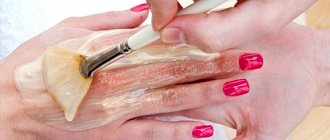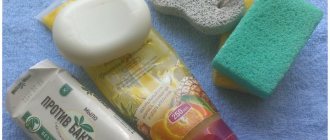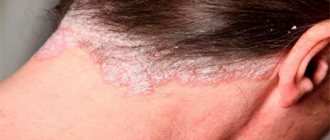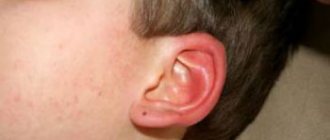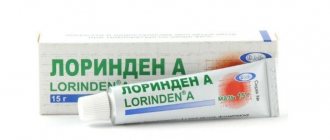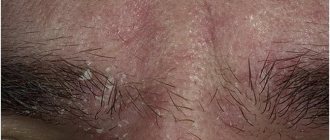What is peeling skin on the palms
Hands are one of those parts of the body that are more susceptible to negative external factors than others. It is natural for the skin to renew on them within a month, when the upper layer of the epidermis is replaced almost imperceptibly. If this becomes obvious, then there is definitely a problem in the body. You should be alert to the skin on your hands bursting, flaking and hanging down in the form of rags that can even be torn off. This is peeling, which affects the fingers and hand as a whole, and often even both.
Symptoms
Skin peeling is manifested by several simple signs - it bursts or cracks, after which pieces of the epidermis appear on the surface, which peel off on their own or can be torn off. Such symptoms affect the fingers as a whole, the surface between them and their pads, the palm itself and its back side. The skin may peel off on a certain part of the hand or all at once. A reason to consult a specialist are other signs that may be present along with peeling:
- peeling;
- burning and itching;
- redness;
- rash;
- pain.
How dangerous is the syndrome?
Less commonly, the body is bothered by such a phenomenon as peeling of the skin, which most often appears on the upper and sometimes lower extremities. This should not be surprising at all, because the skin is not only a protective layer, but also a very vulnerable part of the entire body. The skin regularly, every day, comes into direct contact with various foreign bodies, and not all of them are so harmless.
The skin comes into contact with water and various papers, with household items and dozens, or even hundreds, of other things. Some of them contain harmful substances that enter the skin, causing great harm to it, destroying its normal condition. Most often this results in flaky palms. This causes the skin to crack. This phenomenon is very unpleasant, it can cause pain to a person. In addition, this negatively affects his appearance.
This phenomenon can almost directly be called a skin disease, which can be the result of several different defects. Is it dangerous? Peeling is not classified as a dangerous painful phenomenon. In many cases, it goes away over time, but it’s better not to wait for it and act on your own. At the first sign of a problem, the best thing to do is seek medical advice.
So why does the skin on your palms peel? The answer to this question can hardly be categorical and unambiguous. Many certain factors can have a sharply negative effect on the skin, destroying its health, which ultimately leads to flaking of the skin on the palms. Accordingly, the method of solving the problem should be focused on eliminating the source of the disease, which, however, is not always done.
Human skin, more than any other part of the body, is under the aggressive influence of the environment, where too many factors are unfriendly towards it. Therefore, the skin needs constant careful care, perhaps even more than any other part of the human body.
Why does the skin on the palms of the hands peel?
There are many reasons why palms and fingers peel and peel. It all depends on the individual, his skin and occupation. One of the main ones is an allergy to:
- cold;
- caring cosmetics – creams, ointments, soaps, etc.;
- food consumed;
- medicines;
- dishwashing detergent, especially if used frequently without gloves.
Another reason that the skin peels is the lack of proper hand care, including insufficiently deep moisturizing. This is especially true for those who have naturally dry skin. From a lack of vitamins, peeling of the epidermis is also often observed. With a deficiency of microelements, the elasticity of the skin decreases, which can cause cracks. Vitamin deficiency occurs in autumn or spring. In winter, peeling is a consequence of exposure to cold. Among the more general factors that cause peeling are:
- prolonged exposure to the sun;
- dry air during the heating season or hot period of the year;
- the habit of constantly scratching your palms, which causes infection in the tissues;
- contacts with cement, dust, earth and other construction work.
Why do my child’s hands peel and how to treat it?
Very often, many parents notice that, seemingly for no apparent reason, their child’s hands peel off. In fact, there are quite a few reasons for this condition, and an experienced dermatologist will help you understand them, since it is he who should be contacted when the first symptoms of peeling appear on the baby’s hands.
The main causes of desquamation (peeling) of the skin on a child’s fingers:
- vitamin deficiency, namely the lack of vitamins E and A in the child’s body, which are responsible for the integrity and elasticity of the outer epithelium;
- allergic skin reaction to external or internal allergens;
- fungal skin infections and other dermatoses;
- streptococcal or staphylococcal infection;
- viral diseases;
- long-term antibiotic therapy, treatment with sulfonamide and hormonal drugs;
- irradiation of the child’s body;
- frostbite of fingertips;
- stressful situations and neurological disorders;
- helminthic infestations;
- pathology of the pancreas.
Clinic
The onset of the disease is usually quite delayed. Most often, the first sign that signals the possible appearance of flaking of the skin of the hands is itching. Moreover, at first the child’s hands itch not very much and intermittently, but over time the itching becomes more and more annoying.
The skin of the hands becomes inflamed and slightly hyperemic in appearance. At the same time, small blisters without any content appear on the fingertips and in the areas between the fingers. Gradually, these bubbles increase in diameter, involving the healthy skin of the palms in the process.
Rupture of the epithelium occurs, as a rule, due to mechanical damage during scratching. The skin peels off in small layers, and in its place a soft pink epithelium forms.
In some cases, there may be no itching at all, then the only manifestation of a functional disorder in the child’s body will be peeling of the skin of the hands. At first, few people pay attention to this symptom, so proper therapy is prescribed only when the process moves from the fingertips to the palms and above.
Most often, this disease begins in the spring and winter, when the lack of natural vitamins is especially noticeable. The process can take quite a long time and often requires medication. In rare cases, peeling goes away on its own and does not leave any residual effects on the skin.
Peeling treatment
Correction of nutrition is the basis of proper treatment.
To enrich your baby’s diet with vitamins E and A that his body lacks, you should give him daily foods with the maximum content of the above vitamins, namely cereals (oats, corn, rye, barley), potatoes, liver, fish oil, eggs, apricots, peaches, carrots, pumpkin, plums, cabbage, prunes, dried apricots and parsley, dill or cilantro.
It must be remembered that vitamins A and E belong to the group of fat-soluble vitamins and are absorbed only in the presence of fats of animal and vegetable origin, so when preparing dishes you should add a little butter or sour cream to them.
Most often, when the skin of a child’s hands peels, eliminating the imbalance of nutrients necessary for the growing body is the only treatment method that allows you to completely get rid of the unpleasant peeling on small hands. In the winter season, if it is impossible to provide the baby’s daily diet with the necessary vegetables and fruits, treatment of vitamin deficiency will be reduced to the prescription of pharmaceutical multivitamins.
An important aspect of the treatment of this skin condition is daily hygiene procedures. The skin of your hands must always be kept clean. You need to bathe your baby daily, carefully cleaning the desquamated epithelium of the hands.
In the treatment of skin peeling, baths with string , oak bark, celandine or a complex herbal mixture have proven themselves well. You should wipe your fingers and palms with a soft towel and only with wet movements. Using a hard towel and rubbing damaged skin is strictly unacceptable.
Immediately after cleansing, it is advisable to lubricate the affected areas of the skin of the hands with a baby moisturizer, an oil solution of vitamins A and E, or a special multivitamin cream (Bepanten, Boro-plus, Bübchen, Radevit).
In addition to the skin, special attention should be paid to the baby’s nails. They need to be cut at least once a week with safe children's scissors and make sure that dirt does not accumulate under the nails, as it can cause the wounds to become infected when scratched.
If vitamin therapy does not have the desired therapeutic effect, you need to consult a doctor to determine the exact reason why your fingers are peeling and prescribe appropriate treatment.
Traditional medicine
- A decoction of oatmeal will help relieve peeling on the hands of children. It is recommended to take daily baths with oatmeal broth until the damaged skin areas are completely healed.
- Flaxseed or peach oil, which should be used to lubricate children's hands after hygiene procedures, has an effective healing effect.
- Peeling of a child's hands is well relieved by wheat germ extract, which is generously applied to the affected areas.
Causes
The reasons why the skin on the palms and fingers peels are varied, as are the diseases that cause these symptoms:
- Avitaminosis. Epidermal tissue damage occurs when there is a deficiency of vitamins A and C.
- Allergies to chemical detergents, latex products and other cosmetics. In response to irritation, the top layer on the hands peels and cracks.
- Contact dermatitis is a disease of chemical industry workers and anyone who has direct contact with household chemicals, latex gloves (cleaners, housekeepers and all women who clean the house using chemicals).
- Fungal infections are the most common dermatological disease. Girls (dishwashers, saleswomen in meat departments), male construction workers, workers in hot shops and chemical plants often suffer. It appears as weeping lesions, the surface of which is covered with bubbles, spots, and a whitish coating. The epidermis in them peels off and cracks.
- Eczema. There are many varieties, manifesting in different areas with the same symptoms. During an exacerbation, blisters and cracks appear, the skin of the affected areas itches and burns. Scratching leads to secondary infection.
- Psoriasis. The disease is known to be incurable. The appearance of plaques, scales and crusts on the hands and between the fingers is characteristic. The skin becomes rough and causes severe itching.
Other causes of peeling
- Peeling of the hands and feet may be associated with endocrine disorders, manifested by increased sweating of the palms and interdigital folds, and roughness. Patients with diabetes have flaky and itchy feet.
- A common cause of dry and red hands is chapping in cold weather, the appearance of peeling, and the same changes under the influence of bright sunlight.
- Some infectious diseases are accompanied by detachment of the upper epidermis: lupus erythematosus, syphilis, scabies, lichen, hyperkeratosis (increased cell division).
- There are causes of dryness and flaking associated with uncontrolled use of antibiotics and antihistamines.
- Age-related changes are added: hormonal imbalance, metabolic disorders, reduced immunity.
- Some people periodically experience dry and peeling skin on their hands.
The reason is bad heredity. No treatment is required, but constant care is required. - If you notice that the epidermis is drying or flaking, apply cream, observe and wait. If other symptoms are added, you should consult a dermatologist.
Hand lesions in children
In teenagers, the top layer on the palms of the hands dries out and peels off due to hormonal changes, and not vitamin deficiency, as is often assumed.
! To diagnose peeling skin on the hands of a teenager, it needs to be shown to an immunologist or pediatrician.
The reason for the decrease in the protective functions of the epidermis on the hands of a child may be childhood infectious diseases: measles, scarlet fever, staphylococcus. Often a rash, irritation, itching appears on one hand of a child (usually on the right hand), the cause being a fungus.
Children most often become infected with it because they touch dirty objects on the street. Such diseases are difficult to treat and recur (either disappear or reappear). The photo shows features of fungal infection of the hands.
Treatment
Spring vitamin deficiency is identified as a separate disease. For treatment, a course of vitamin complexes and the consumption of fresh vegetables, fruits and dairy products are prescribed. Allergy treatment is carried out with Bepanten, Elocom, Fenistil, the course is supplemented with folk remedies and avoidance of foods such as chocolate, honey, carbonated drinks and others.
When treating contact dermatitis, you should remove all aggressive chemicals, use moisturizers, emollients, ointments and creams, use antibiotics and antiviral medications. Dermatitis and eczema are treated with anti-inflammatory and antiallergic drugs. It is necessary to find out the cause of the exacerbation and follow a diet during such periods.
Fungal diseases are diagnosed after examining the scales under a microscope. Drugs for the treatment of candidiasis: Ketocanazole, Candide, Clotremizan, Fluconazole and others. They are taken for a long time (up to 1 month) until the symptoms disappear. Antifungal ointments are used externally for another week after recovery for prevention.
For mycosis, in addition to pharmaceutical medications, treatment with folk remedies is used in the form of infusions, decoctions, herbal baths (celandine, lavender extract, chamomile), various oils (almond, flaxseed, sage oil). A potato mask moisturizes well and makes your hands soft and tender (raw grated potatoes are applied to the damaged areas, a glove is put on your hand for two hours).
Hand masks are prepared from fermented milk products (sour cream or kefir is applied to the dry surfaces of the palms and covered with a napkin). It is good to wipe the outer side of the brush dehydrated in the sun with cucumber juice. Use an oatmeal scrub to remove the stratum corneum.
Conclusion
If the epidermis is damaged due to endocrine disorders or other internal disorders of the body, these conditions must be stabilized by taking medications prescribed by a specialist. Often the skin on the hands peels off due to exacerbation of parasitic diseases.
In this case, you cannot do without medication. The causes of peeling on the palms of the hands can be different: from simple hypothermia to serious infections. It is easier to prevent a disease than to treat it. Follow preventive measures, and the skin on your hands will be clean and soft.
Source:
Why do my child’s hands peel and how to treat it?
The main causes of desquamation (peeling) of the skin on a child’s fingers:
- vitamin deficiency, namely the lack of vitamins E and A in the child’s body, which are responsible for the integrity and elasticity of the outer epithelium;
- allergic skin reaction to external or internal allergens;
- fungal skin infections and other dermatoses;
- streptococcal or staphylococcal infection;
- viral diseases;
- long-term antibiotic therapy, treatment with sulfonamide and hormonal drugs;
- irradiation of the child’s body;
- frostbite of fingertips;
- stressful situations and neurological disorders;
- helminthic infestations;
- pathology of the pancreas.
Diagnostics
It is difficult to identify exactly the reasons why the skin on both palms is peeling off on your own, because some tests are needed. During a visual examination, the doctor notes other symptoms, such as cracks, pain, redness or itching. He also determines the places where these signs are noted, if they are not only on the hands. The doctor looks to see if only the fingers or palms as a whole are peeling, identifies the patient’s skin type and inquires about how long the problem has been. To diagnose hidden diseases, blood and urine tests are prescribed. A skin sample helps identify an external irritant, such as a fungus.
Medical intervention
If annoying peeling does not go away, this means that we are talking about a serious pathology inside the body. Then you definitely need to go to see a doctor; you shouldn’t put it off, because if we are talking about a disease, it will not go away on its own, but will only develop.
The doctor will first visually examine the patient and prescribe biochemical tests. It is quite possible that the problem lies in allergic reflexes, but the patient did not understand this and continued to use substances that irritate the body all the time. If it is an allergy, the doctor will indicate this and prescribe antihistamines for therapy.
Things are much more serious when it comes to the manifestation of such advanced pathologies as eczema, dermatitis or, for example, psoriasis. In the presence of such sores, no independent treatment is acceptable; it can even harm the body. Therapeutic therapy should be completely directed by a specialist, and any therapeutic drugs should be taken as prescribed by the doctor.
A very characteristic sign of pathologies affecting the skin is the detachment of the stratum corneum of the epidermis from the arms and hands. Most often we are talking about the following formations:
- parakeratosis;
- diseases of a parasitic nature, such as scabies;
- outbreak of scarlet fever;
- fungal damage;
- lichen planus;
- infectious pathologies, mainly staphylococcus;
- lupus erythematosus;
- syphilis.
Some of the diseases listed above have very characteristic symptoms. For example, in the presence of scabies, the process of skin peeling is observed primarily between the fingers. With fungal complications, the extreme sides of the palms suffer, and if it is scarlet fever, then peeling of the skin occurs from the area of the fingertips.
The remaining sores do not have pronounced pathologies or do not show signs of themselves for a long time. The dermatologist, having understood the essence of the pathology, will prescribe drug treatment. In relation to each disease, specific medications will be used, which are intended personally to neutralize the source of the disease.
The attending physician plans therapy, focusing on an individual approach to each patient, depending on the nature of his disease.
What to do
A dermatologist can correctly diagnose the reason why the skin of your hands is peeling, so if you have such a symptom, it is better to immediately contact a dermatologist. Until this point, you can try to improve the condition or at least alleviate it. The first thing you need to do is start taking care of your skin. After washing, they need to be dried thoroughly. Twice a day, the skin should be lubricated with a nourishing cream containing chamomile, glycerin or aloe. The following will help improve your condition:
- Baths. A very effective recipe is 1 tablespoon per 1 liter of water. Leave your hands in this composition for about a quarter of an hour, after which they are blotted with a napkin and lubricated with cream.
- Masks. Honey ones are especially useful. Honey should simply be applied to the skin. After half an hour, it is washed thoroughly.
- Lotion. Rub your hands with a piece of cucumber, then lubricate them with a mixture of glycerin cream and lemon juice.
Treatment
A certain therapy is prescribed by a doctor after diagnosing the disease. It may include medications and a number of care products, including traditional recipes. It can be especially difficult to get rid of fungal infections, but after identifying its type, this is quite possible with the correct selection of ointment. In case of an allergic reaction, completely different medications are prescribed - with antihistamine properties, and in case of vitamin deficiency - with a complex of vitamins. Even salon procedures such as paraffin therapy, hot or spa manicure can prevent peeling.
Therapy at home
That is, there is either a lack of nutrients or an allergic reaction.
Anyone can solve this problem without the help of a medical specialist. Self-therapy should include:
- improving a nutritious diet;
- use of creams and ointments;
- withdrawal from use of any products to which you are allergic or that harm proper metabolism.
For therapy, you can make medicine using good old folk recipes for decoctions and tinctures. Here's what you can make yourself at home:
- A mixture of oatmeal and honey. The recipe is very simple, you need to put oatmeal and honey in a container, there should be equal amounts of everything. Then apply this to your skin for about half an hour. Afterwards, rinse with clean water and then lubricate your hands with cream. Sometimes you can use plain chopped potatoes instead of honey.
- Oil bath of chamomile and olive oil. This recipe is a little more complicated, but the effect is strong. You must first heat the olive oil in a water bath, then pour it into another container. In the same container you need to add vitamins E or A, or both if necessary. Vitamins are added exactly 2 capsules each, and chamomile oil in a volume of 6-8 drops. Afterwards, the mixture should sit for 20 minutes, then you need to dip your damaged palms into the mixture, hold for a few minutes, pull out and wipe with a napkin.
- A mixture of chamomile and almond oil. Both elements can be mixed and enriched with sage, lavender flower and fruit (citrus) oils.
All these folk practices, due to their effectiveness, have not lost popularity to this day; they often completely replace medications and help carry out drug therapy in cases where the skin begins to peel off.
Prevention
Regular preventive measures can help prevent skin problems. It consists of good hand care, which includes:
- Dry your hands thoroughly after washing;
- refusal of antibacterial soap in favor of a soft gel for sensitive hand skin;
- drink up to 2 liters of fluid daily to prevent dehydration;
- use sunscreen in summer;
- in cold weather, always wear mittens or gloves;
- maintain proper nutrition so that the diet is rich in vitamins;
- use rubber gloves when doing housework;
- use hypoallergenic cosmetics;
- Lubricate your skin with moisturizing creams daily.
Extraneous reasons
Often external factors are the primary sources of skin diseases. These include:
- hygiene products;
- household chemicals;
- weather: dry air, frost, ultraviolet radiation;
- water: hot or cold.
Skin problems occur not only in adults, but also in children. A typical cause of development is a pathological condition during pregnancy of the mother. Otherwise, external and internal factors are the same no matter how old a person is.
The symptoms of almost all diseases are similar to each other. In addition to dryness, there is redness and itching, air-filled blisters or cracks appear.

